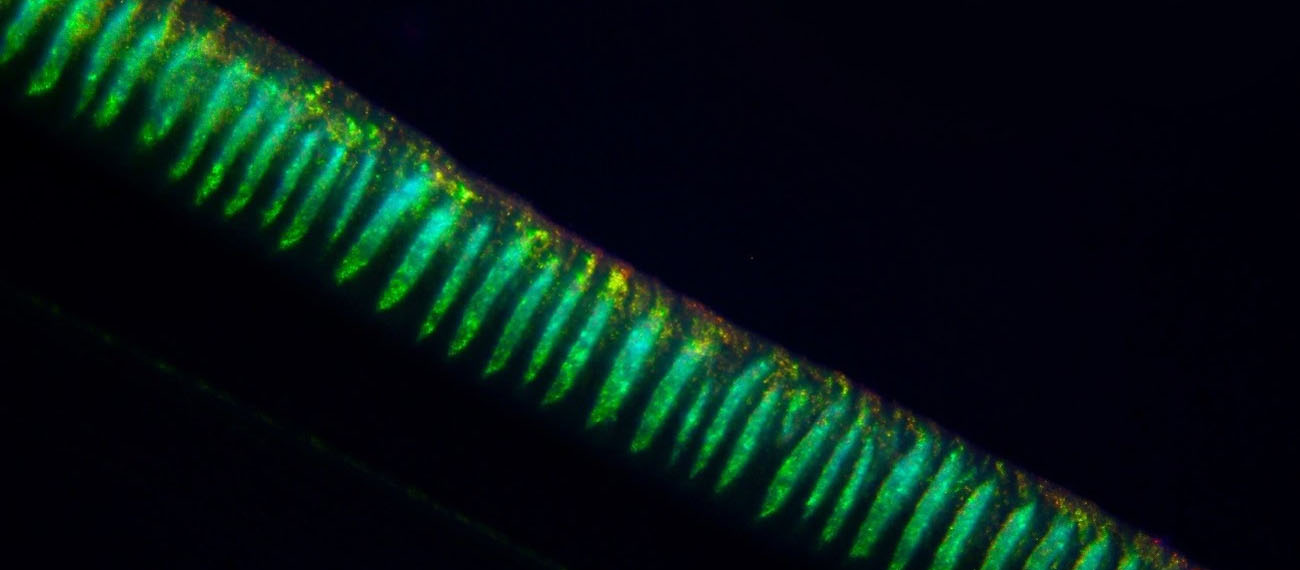Hoekmine: finding the genes that colour life in the sea
Baltic Iredescence – from macroalgal microbiota to new enzymes and optical materials
The company
Hoekmine is a located within the iLab at the Hogeschool Utrecht. The company emerged from the SME MicroDish and works on isolation and genetic modification of microorganisms. Hoekmine BV, based in the Netherlands collaborates with the Vignolini Lab in Cambridge University (UK). Both organizations report the genetic and optical analysis of a bacterium that is the brilliantly coloured Flavobacterium IR1, isolated from an estuarine environment. Hoekmine views microorganisms as complex structured communities with complex microbial structures that can be used to derive new optical materials and compounds. A good example is drugs with new, commercial properties. The company performs research, development and contract research within this area.
The marine environment is being mined for drugs, but this work shows that we can also search for colours which is big business. Now we begin to understand the genes involved, and how they form living structures that manipulate light, we can alter this bacteria to make new optical materials inspired by nature, in addition to understanding the role in life.“
The ALLIANCE was extremely useful to support our business development including help ranging from provision of samples of algae from the Baltic Sea to advice on commercial developments - small companies need a European network like this that amplifies their reach.”
-

Colin Ingham
Hoekmine
The idea
Hoekmine has isolated an iridescent Flavobacterium IR1 and developed its genetics and a proprietary method of fixation to allow structural analysis. Sulphated algal polysaccharides, such as fucoidan, trigger iridescence, and IR1 tends to organise on marine macroalgae. The idea is to screen Baltic macroalgae for iridescent microorganisms, to unravel the resulting structures and possibly modify underlying genes in order to create new colours and determine the nanostructures, which form the basis of the colour.
These structural colours might be valorised in different areas such as:
- fabrics
- cosmetics (by copying the nanostructures of interest into cellulose)
- banknotes
- security (tracking of items by very sophisticated barcodes)
- automotive industry (paints for cars).
Another aim of Hoekmine is to identify and valorise fucoidan processing enzymes as additional business opportunities.
The allies
Hoekmine as a beneficiary of the ALLIANCE’s mentoring programme, has worked with the ALLIANCE partners, Tartu Biotechnology Park and CleanTech Latvia, for developing the next steps of the business plan. Furthermore, thanks to the Finnish Environment Institute (SYKE), Hoekmine signed Material transfer agreement (MTA) for transfer of algae from Finland to the Netherlands. With the support of the ALLIANCE (primary mentor is GEOMAR Helmholtz Centre for Ocean Research Kiel and the secondary mentor is Scottish Association for Marine Sciences), Hoekmine managed to make mutants with altered colors, which were then optically characterized at Lab in Cambridge University.
Photo: C. Ingham. A 5 mm long streak of Flavobacterium IR1 on an agar plate showing an intense, green banding pattern as this living, self-organising structure catches the light. If the observer shifted their angle the dark stripes would become light and the black areas reveal their colour in turn.




